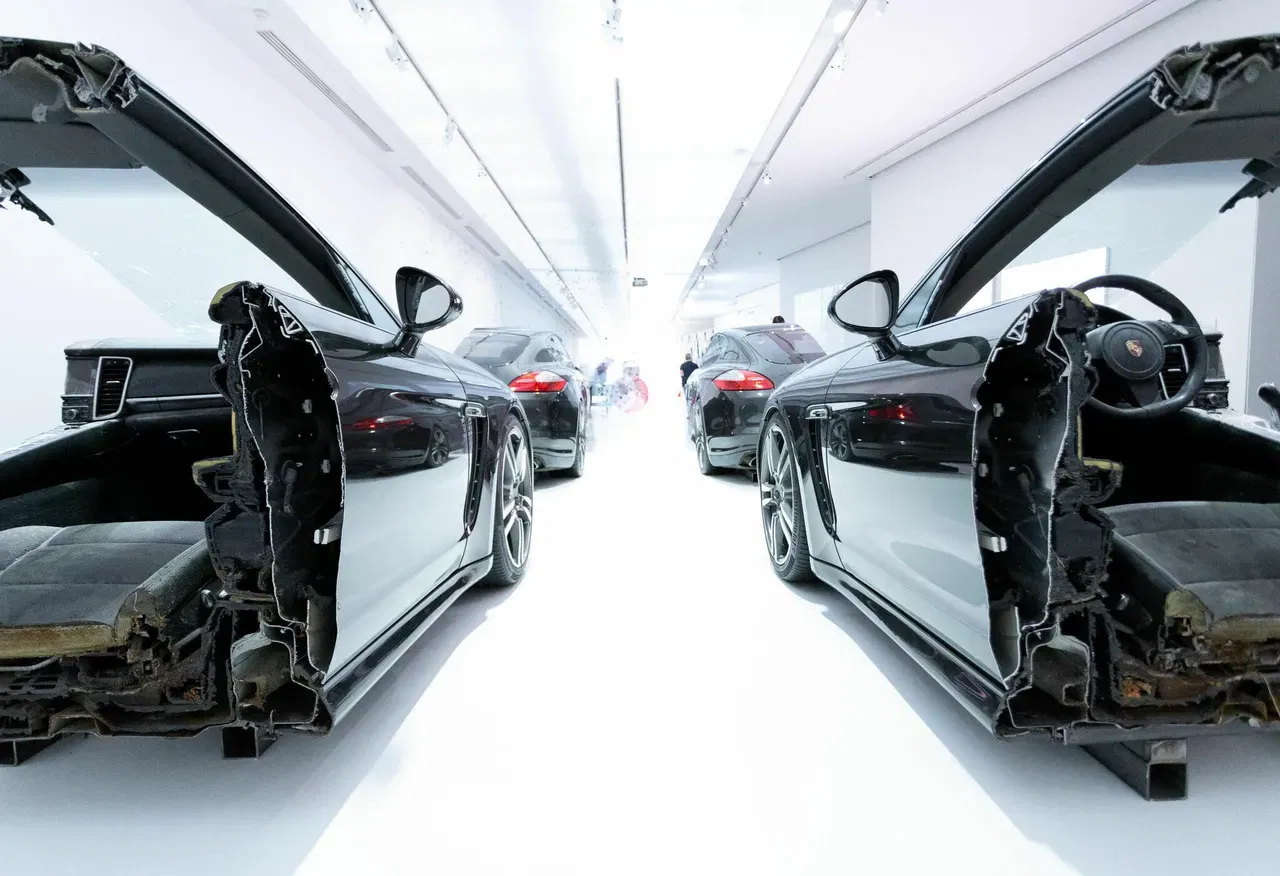
Photo: Yngve Holen
On the occasion of the launch of Stavanger Secession, a new and yearly arts event in Stavanger, the curatorial duo Pierre-Alexandre Mateos and Charles Teyssou will be in conversation with the artist Yngve Holen at Kunsthall Stavanger on Friday June 23rd at 6 pm.
In revisiting Holen’s major works, the talk will explore some of the most potent techno-industrial creations of the 20th century, such as cars, planes and 5G as two folded inventions: both new tools and new catastrophes in potentiality.
While Yngve Holen is obsessed with the systems and infrastructures that surround us, from modern transport to 5G, it is the disruptions in the production chains, the malfunctions, and ultimately the industrial accidents that interest him. Anticipating accidents is a matter of statistics, philosophy, theologies and also of politics - the latter being responsible for preventing them and dealing with crisis situations that erupt in their aftermath.
Every
On the occasion of the launch of Stavanger Secession, a new and yearly arts event in Stavanger, the curatorial duo Pierre-Alexandre Mateos and Charles Teyssou will be in conversation with the artist Yngve Holen at Kunsthall Stavanger on Friday June 23rd at 6 pm.
In revisiting Holen’s major works, the talk will explore some of the most potent techno-industrial creations of the 20th century, such as cars, planes and 5G as two folded inventions: both new tools and new catastrophes in potentiality.
While Yngve Holen is obsessed with the systems and infrastructures that surround us, from modern transport to 5G, it is the disruptions in the production chains, the malfunctions, and ultimately the industrial accidents that interest him. Anticipating accidents is a matter of statistics, philosophy, theologies and also of politics - the latter being responsible for preventing them and dealing with crisis situations that erupt in their aftermath.
Every accident is a question of speed: by slowing down an accident, we can influence the tipping point before impact. Speed and accidents are at the heart of the practice of Holen, an artist the curators like to think of as a space-age catastrophist and single-machine cassander.
Born and raised in Stavanger, Yngve Holen was exposed in his youth to the culture of engineering and risk, ubiquitous in a city surrounded by offshore oil infrastructure. Our reading of his work led us to the technical theorist and urban planner Paul Virilio. In his essay Speed and Politics (1986), he coined the neologism Dromologie, a term that combines the Greek etymology dromos (acceleration, speed) and logos, science. How can we neutralize speed in a society that is obsessed with it? Virilio’s response to the blindness generated by the speed of technical progress and inventions of all kinds is a lucid deconstruction of the accident. As the museum originated as a cabinet of curiosities linked to the colonization of the world and the time of great discoveries (15th to 21st centuries), we need to think of its counterpart: the chamber of catastrophes, the evil double of the Wunderkammer.
Conceptualized in 2011 by Virilio, this Museum of Accidents has always remained in an embryonic state. We have to exhibit accidents to avoid being exposed to them. Drawing on the past and the future, Yngve Holen’s ambition is to think up or invent this museum of accidents for Stavanger Secession.
Ultimately, this talk will be a blueprint for a Museum of Glitch and Accidents that will emerge as part of the 2024 edition of Stavanger Secession.
Stavanger Secession is the first series of an international exhibition that will happen yearly in the city of Stavanger, Norway.
For its Prologue on June 23-25, 2023, Stavanger Secession will deploy its main concepts and start to activate different locations in the city with arts, talks, screenings, and performances.
The Prologue of Stavanger Secession will explore the core concept of secession by examining stavanger’s history through this public program. Artists, thinkers and mavericks will excavate Stavanger’s mythologies and speculate about new horizons.
Stavanger Secession will take its roots in the figure of Lars Hertervig, a romantic painter, artist maudit, and spiritualist, who was experimenting with a retreat or a personal secession from the rest of the world. With multiple paths and narratives, the Prologue will explore secessionism in all its different polarities: Isolation, anchoring, distraction, and sublimation.
In its atmospheric background: Dark existentialism, the horror novel genre, the Museum of Accidents, common ruins, quaker engineering and machine celibataires, conflict and eroticism of oil, politics and speed, internet fortresses and grottos, infused and pervasive visions, euphoria and guilt, hermitage and silent light, secessionist communities and open ones, independence and autonomia, spiritual introspection and quests of sublimation, disempowerment and frugal existence, demiurgic climate and illuminations.
Stavanger Secession will develop its different ambitions and scenarios in the perspective of its stage 1 in june 2024, where artists will produce artworks and interventions in the city of Stavanger.
Stavanger Secession is curated by Pierre-Alexandre Mateos and Charles Teyssou.
Pierre-Alexandre Mateos and Charles Teyssou are a duo of curators based in Paris. Their current projects include Paris Orbital, a public program at the Pinault Collection - Bourse de Commerce on the links between Parisian mythologies and pulp culture, a publication on homosexual cruising with HEAD (Geneva) and Spector Books (Leipzig), and Art Basel's Conversations de Paris+ program in October 2023.
Yngve Holen (b. 1982, Germany) is a sculptor who currently lives and works in Oslo and Berlin. He graduated from Städelschule in Frankfurt. His work has been exhibited worldwide, including solo exhibitions at Kunsthalle Basel; X Museum, Beijing; Kunstnernes Hus, Oslo; Kunsthall Stavanger, Stavanger; Galerie Neu, Berlin; and Modern Art, London.